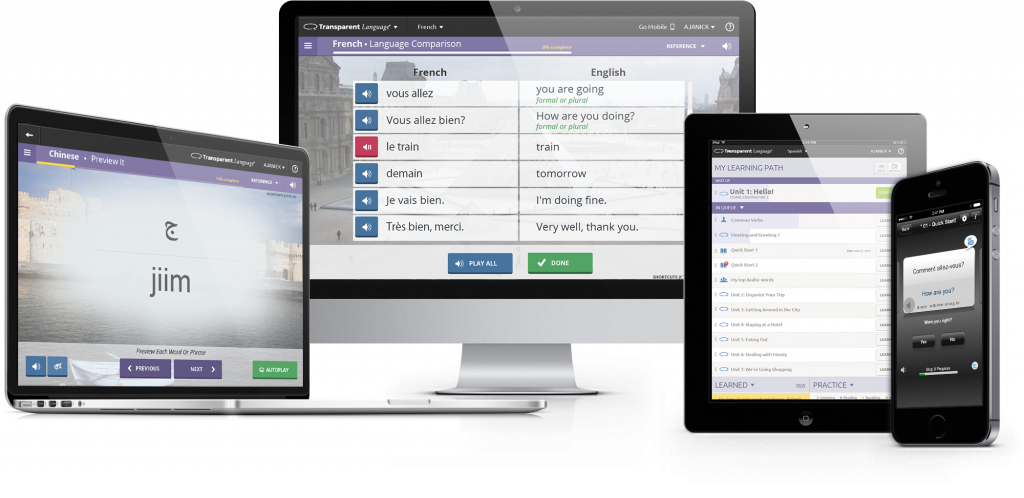How to Learn a Language When You Don’t Like Learning Languages Posted by meaghan on Dec 24, 2014 in Archived Posts
For some people, the process of learning a language is just as exciting as being able to speak it. They enjoy researching word origins, discovering conjugation patterns, comparing vocabulary and expressions from one language to the next, and meticulously perfecting their pronunciation.
Then, you have the rest of us who just want to put the dang language to use. Don’t get me wrong, there’s nothing wrong with being a language nerd. But for some learners, the act of learning feels more like slow torture than a suspenseful and exciting build-up to the ultimate goal of truly speaking the language. Even renowned polyglot Benny Lewis has admitted he’s not passionate about learning languages, he’s passionate about using them.
So, for those of you who fall in this second boat: how do you learn a language when you don’t actually like learning a language? Here are a few of my best tips, but I’d love to hear yours as well in the comments!
Use authentic materials
If you find textbooks a little too contrived or boring, well, you’re not alone. The good news is that there are other materials out there for you! Resources don’t need to be designed for learners to be effective for learning. In fact, authentic materials—materials created for some social purpose and not intended for language learners—can expose you to aspects of the language you can’t find in a textbook, like slang or idioms. (And those are sometimes the most interesting parts!) So if you’re miserable using it, put the textbook back up on the shelf and swap it for something a little more authentic:
- News sites: Find out what’s going on in your country of interest and use the articles or videos to pick up some relevant vocabulary or grammar while you’re at it.
- Music: Search Spotify for songs in your target language and find some artists in your wheelhouse. Spend time just absorbing and enjoying the music, and look up words or expressions in the lyrics that you don’t quite understand.
- Twitter accounts: Find some interesting figures—politicians, athletes, actors, activists, etc.—who speak your target language and follow them on Twitter. This is a great way to pick up some conversational language, and you can practice responding to their tweets as well.
You can also bookmark a few blogs or watch commercials on YouTube, among myriad other authentic approaches to language learning. Don’t be discouraged if you’re a beginner, just start out small with resources aimed at younger audiences, like children’s books and movies.
Find a pen pal
A pen pal is another authentic resource you can turn to, but it comes with the added bonus of not being such a solitary activity. If you’re motivated not by learning but by using a language, corresponding with a pen pal is great practice. Services like InterPals can link you up with someone who speaks your target language, giving you a chance to practice both reading and writing in a meaningful way. You’re not filling out worksheets, reading fake dialogues, or writing for an assignment. There’s a living, breathing human on the other end of your letters waiting to hear and learn from you! What could be more motivating than that?
Make it sensory
Part of the reason sitting down to read a chapter in your textbook, diagram sentences, or write up endless piles of flashcards is so dull is that there’s nothing memorable about it. You need a little extra something to motivate yourself, and what better way than to engage your senses? Listening to a song or watching a movie is a good step in the right direction, but what about making a traditional meal using a recipe in the target language? You’ll be interacting with the language (learning some interesting culinary vocabulary, for certain), but you’ll also be doing something memorable.
Whether you scarf down the entire meal or have a hard time putting down a single bite, you’ll be able to recall working with the recipe, preparing the dish, sharing it with your friends or family, etc. If you don’t enjoy the learning process, you need to look at language as a means to an end. You may not be able to put it to use with a native speaker every day, but at least you can do something useful and exciting with your new language.
Learn with software
Learning with a software program may sound just as boring as a textbook, but hear me out. We talked about engaging your senses in the last point, and a good language-learning program will do just that, building your listening, speaking, reading, and writing skills. An even better language-learning program will do so in a way that’s easy and fun. And I don’t mean easy as in “you’ll learn a language in 10 days with our software” easy. That’s just ridiculous. I mean easy as in the program packages together and presents you everything you need—vocabulary with text and audio, game-like activities to keep it interesting and appealing, tracking and analytics to show you how you’re doing and keep you on track, etc. What’s more, in this age of all things digital, learning on your tablet or laptop can make for a more natural, interesting, tolerable experience in and of itself. Sound too good to be true? We offer all of this and more in Transparent Language Online—sign up for the free 7-day trial and see for yourself.

Build vocabulary, practice pronunciation, and more with Transparent Language Online. Available anytime, anywhere, on any device.






Comments:
Ken:
I can relate to some of your tips. For example when I was actively studying Russian I made a point to learn several Russian songs, mostly the ones I had heard in movies such as “Irony of Fate” (I really don’t like that movie, but it does have some good songs). Every so often I’ll run into a word that I don’t immediately recognize, then remember it is in a song that I know.
And if you interpret “pen pal” loosely enough I have used that, as I have some Russian-speaking friends on social media that I chat with occasionally.